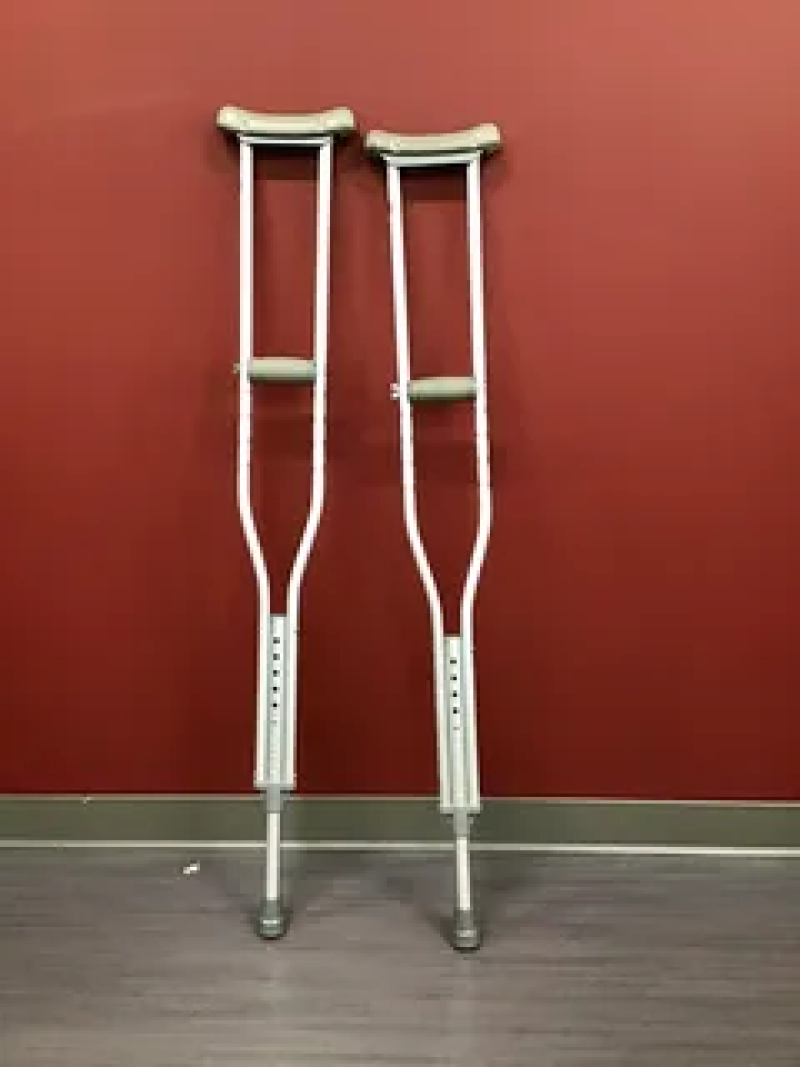Axillary crutches, often referred to as underarm crutches, have been a vital mobility aid for individuals recovering from lower limb injuries or surgeries, as well as those with temporary or permanent disabilities affecting their legs. These crutches help distribute weight away from the legs to the upper body, allowing for improved mobility and independence. Their distinct design includes padded support that fits underneath the armpits, coupled with hand grips to facilitate effective weight transfer and balance.
Key Features and Functional Benefits of Axillary Crutches for Users
Axillary Crutches offer essential features tailored to provide optimal support and enhance user comfort during ambulation. The crutches typically consist of an adjustable aluminum or steel frame, enabling users to modify the height according to their specific body measurements. This adjustability ensures proper posture and prevents secondary injuries such as shoulder strain or nerve compression. The cushioned underarm pads reduce pressure on sensitive tissues, while non-slip rubber tips at the base provide stability across various floor surfaces. Hand grips are ergonomically designed to minimize hand fatigue and allow for a firm grip.
Users benefit significantly from axillary crutches as these aids facilitate partial or full weight-bearing on the upper body, bypassing injured legs. This is especially important during the healing period following fractures, ligament tears, or joint surgeries. Additionally, axillary crutches enable more natural gait patterns compared to some alternative mobility aids, promoting faster rehabilitation. The combination of upper body strength training and mobility assistance also contributes to improved overall fitness and confidence in movement.
Market Dynamics and Emerging Trends in Axillary Crutch Utilization
Over recent years, the demand for axillary crutches has seen steady growth, fueled by rising incidences of orthopedic and neurological conditions requiring mobility support. Aging populations across global regions have driven further adoption, with increased awareness of mobility aid options contributing to more informed purchasing decisions by patients and caregivers alike. Innovations in lightweight materials such as carbon fiber and advanced polymers have led to enhanced crutch durability and reduced user fatigue, thus expanding their appeal beyond traditional designs.
Another notable trend is the integration of ergonomic and antimicrobial features in axillary crutches, designed to elevate user comfort and hygiene—particularly important in clinical and rehabilitation environments. Furthermore, the customization options available have expanded, with manufacturers offering adjustable grips, padded underarms, and even foldable designs for convenient travel and storage. These factors have collectively influenced purchasing patterns and the competitive landscape in the medical device sector related to mobility aids.
Navigating Detailed Market Research on Mobility Aid Devices
For stakeholders seeking in-depth insights into the mobility aids segment, including axillary crutches, comprehensive market research reports provide critical data on industry growth, competitive analysis, and emerging opportunities. These reports typically cover quantitative metrics such as market volume, revenue forecasts, and segment-by-segment analysis based on parameters like material type, end-user demographics, and geographic regions. Additionally, they include qualitative assessments regarding technological advancements, regulatory landscape, and consumer behavior trends impacting product development and sales strategies.
Accessing specialized market intelligence enables manufacturers, distributors, healthcare providers, and investors to align their strategic planning with emerging demands and regulatory requirements. The reports also help identify key players, M&A activities, and partnerships within the global mobility aids market, offering a holistic view of the competitive environment. Organizations aiming to optimize their product portfolios and marketing tactics benefit significantly from these analytical resources.
Commercial and Transactional Considerations When Purchasing Axillary Crutches
When selecting axillary crutches for personal or institutional use, several commercial factors come into play. Price competitiveness is a vital consideration, influenced by materials, brand reputation, and additional features. Potential buyers often compare models based on weight capacity, user comfort, and durability to ensure maximum value. Warranty and after-sales support also factor heavily into purchase decisions, given the importance of sustained performance and possible component replacement.
In the realm of transactional keywords, online marketplaces and medical supply vendors offer a wide range of axillary crutch options, with filters to refine choices based on user needs such as pediatric versus adult sizes or specialized cushions. Direct purchase options, bulk ordering for hospitals, and customized fittings are frequently searched commercial aspects that facilitate smooth procurement. Retailers that provide detailed product descriptions, customer reviews, and clear return policies tend to have higher conversion rates and customer satisfaction scores.
Insurance coverage and reimbursement policies also impact purchasing behavior, as many users rely on health plans to subsidize the cost of mobility aids. Transactional search terms often include phrases related to “buy axillary crutches online” or “axillary crutches price comparison,” reflecting the intent-driven nature of these queries. Prospective buyers benefit from comparing vendor offerings and reviewing clinical recommendations to ensure their choice aligns with medical needs and budget constraints.
Get This Report in Japanese Language: 腋窩用松葉杖
Get This Report in Korean Language: 겨드랑이 지팡이
Read More Articles Related to this Industry- Recent Development in Electroencephalography Industry
About Author:
Ravina Pandya, Content Writer, has a strong foothold in the market research industry. She specializes in writing well-researched articles from different industries, including food and beverages, information and technology, healthcare, chemical and materials, etc. (https://www.linkedin.com/in/ravina-pandya-1a3984191)
